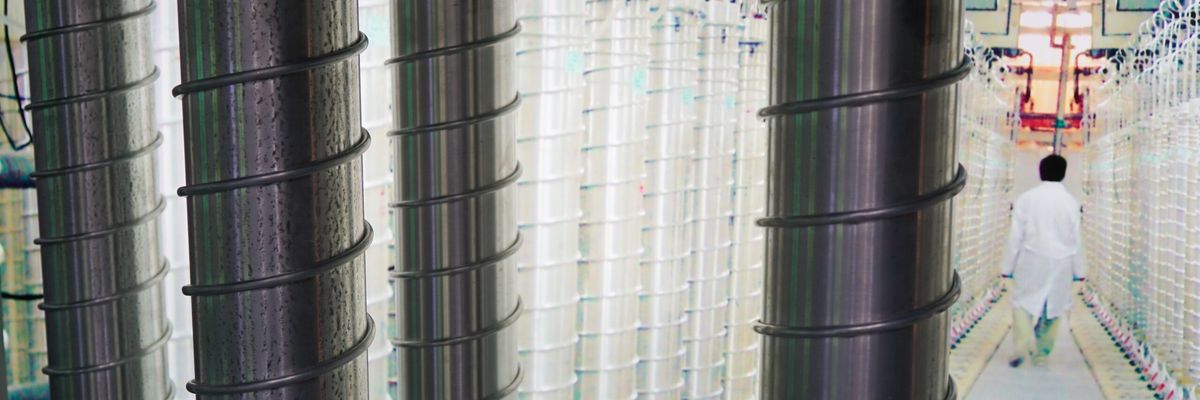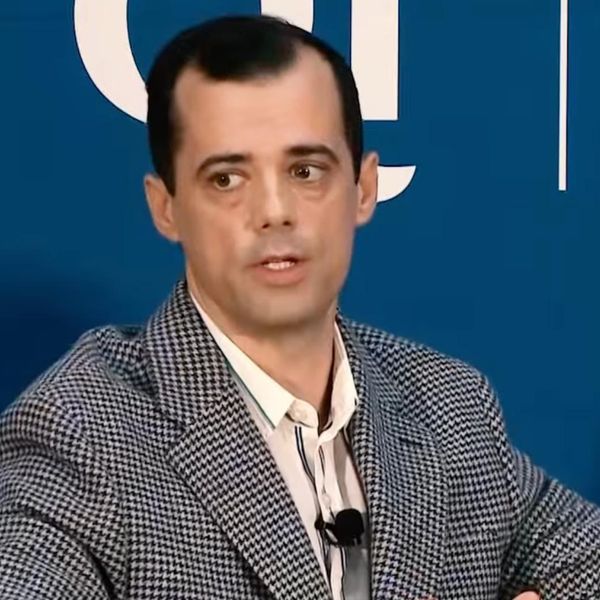The latest twist in hardcore opposition to restoration of the nuclear limitation agreement known as the Joint Comprehensive Plan of Action, or JCPOA, comes in apparent response to signs that negotiators in Vienna may actually be close to an accord. That opposition, which has been mostly sounding the same set of now-familiar themes ever since the original JCPOA was first under negotiation nearly a decade ago, always has been less about the terms of a deal than about not wanting any agreement at all with Iran. The new twist is the notion that a restored JCPOA would not push Iran far enough away from a capability to build a nuclear weapon to make such a new deal worthwhile.
The underlying idea is that advances that Iran has made in its nuclear program over the past three years — since the Trump administration’s reneging on the JCPOA in 2018 released Iran from its obligations under the agreement — cannot be totally reversed. Although enriched uranium can be shipped out or blended down and centrifuges can be removed from production lines, the knowledge and experience that Iranian scientists may have gained cannot be taken away.
The new line of opposition focuses on “breakout time,” a common shorthand way of expressing how much estimated time it would take a nation to produce one bomb’s worth of fissile material if it chose to do so. The major retrenchment in nuclear activities that Iran was obliged to take under the JCPOA extended breakout time to a year or more, in contrast to what was probably only two or three months before the agreement entered in force. The expanded Iranian enrichment activity since the United States reneging is generally estimated to have reduced breakout time down to only a month or so. The opposition argument is that given that unremovable knowledge and experience, even a restored JCPOA would not be able to push breakout time back up to a year and might leave it at something like six months.
The first thing to remember is that it was Trump’s reneging — cheered on by those same hardcore opponents of the JCPOA — that brought about Iran’s expanded nuclear activity and the situation we are in now. If the United States had adhered to its obligations under the agreement, none of that expansion would have occurred and we would still be looking at a breakout time of a year or more.
It also is useful to understand what breakout time does and does not mean. Although it has been a convenient way to represent the size and enrichment levels of a stockpile of fissionable material, it does not represent the time before a country has a nuclear weapon. Building such a weapon would require many more technically demanding steps, including turning enriched uranium into a metal core and all the other aspects of designing and fabricating a deliverable device. Because of those other steps, Iran might still be well away from an ability to build a nuclear weapon even if it were to acquire a bomb’s worth of highly enriched uranium.
How far along Iran goes on this path is still worth worrying about, for general considerations of nuclear nonproliferation even if for no other reason. The greater the breakout time, the less far along this path Iran will be. Any conceivable agreement coming out of the current Vienna negotiations would mean greater breakout time than the alternative of no agreement.
Opponents of the JCPOA — focusing on breakout times of, say, six months versus a year — charge that the Biden administration is willing to accept a deal that is “even worse,” to use the opponents’ terminology, than the original JCPOA. But as always in the opponents’ years-long effort to defeat any agreement with Iran, they never compare what they are criticizing with the alternative. The long, difficult, leave-it-all-on-the-table negotiations that first produced the JCPOA and that are now taking place in Vienna belie the notion that there is some “better deal,” incorporating everything the opponents would like, to be had. The true alternative to a restored JCPOA — that is, no agreement at all — already has breakout time down to about a month and soon would have it down to zero.
The opponents’ rhetoric about breakout times ignores two other important considerations. One is that insofar as breakout time might be significant, it involves how much lead time the world community would have to react to a country that suddenly started racing to make a nuke. This in turn involves the ability to detect and monitor that country’s nuclear activities, and this points to one of the most important elements of the JCPOA — the highly intrusive international monitoring of the Iranian program. This augmented monitoring arrangement — which would end if the JCPOA dies — is the best guarantee that any move Iran might make to militarize its nuclear program would be detected almost immediately.
The other ignored consideration is that breakout time becomes meaningful at all only if the country involved decides to “break out” of an agreement and race to make a nuke. There is no indication Iran has made any such decision. There are indications that it has worked in the past on a nuclear weapons option but evidently suspended that work. Tehran’s signing of the JCPOA is utterly incomprehensible except in the context of a strategic decision by Iran that it would be better off as a non-nuclear weapons state that gets relief from economic sanctions and is integrated into the world community, than to be a sanctioned and isolated nuclear pariah. Iran’s extensive dismantling of its nuclear program under the JCPOA would make no sense under any other interpretation.
That Iranian strategic decision is reversible. The course of action that opponents of the JCPOA favor — continued economic sanctions and isolation despite Iran’s previous compliance with the JCPOA restrictions — is a recipe for making such reversal more likely. It becomes likelier still when threats of military attack are added, which leads policymakers in Tehran to think more about a need for nuclear weapons to deter such attacks.
The safest avenue toward avoiding an Iranian nuclear weapon is for Iran never to decide to build such a weapon in the first place. Assuring that it does not so decide requires the sort of incentive structure embodied in the JCPOA — an agreement Iran showed no sign of wanting to break out of, even after the Trump administration did. Breakout times become mostly an academic exercise as long as Iran never tries to break out.
















